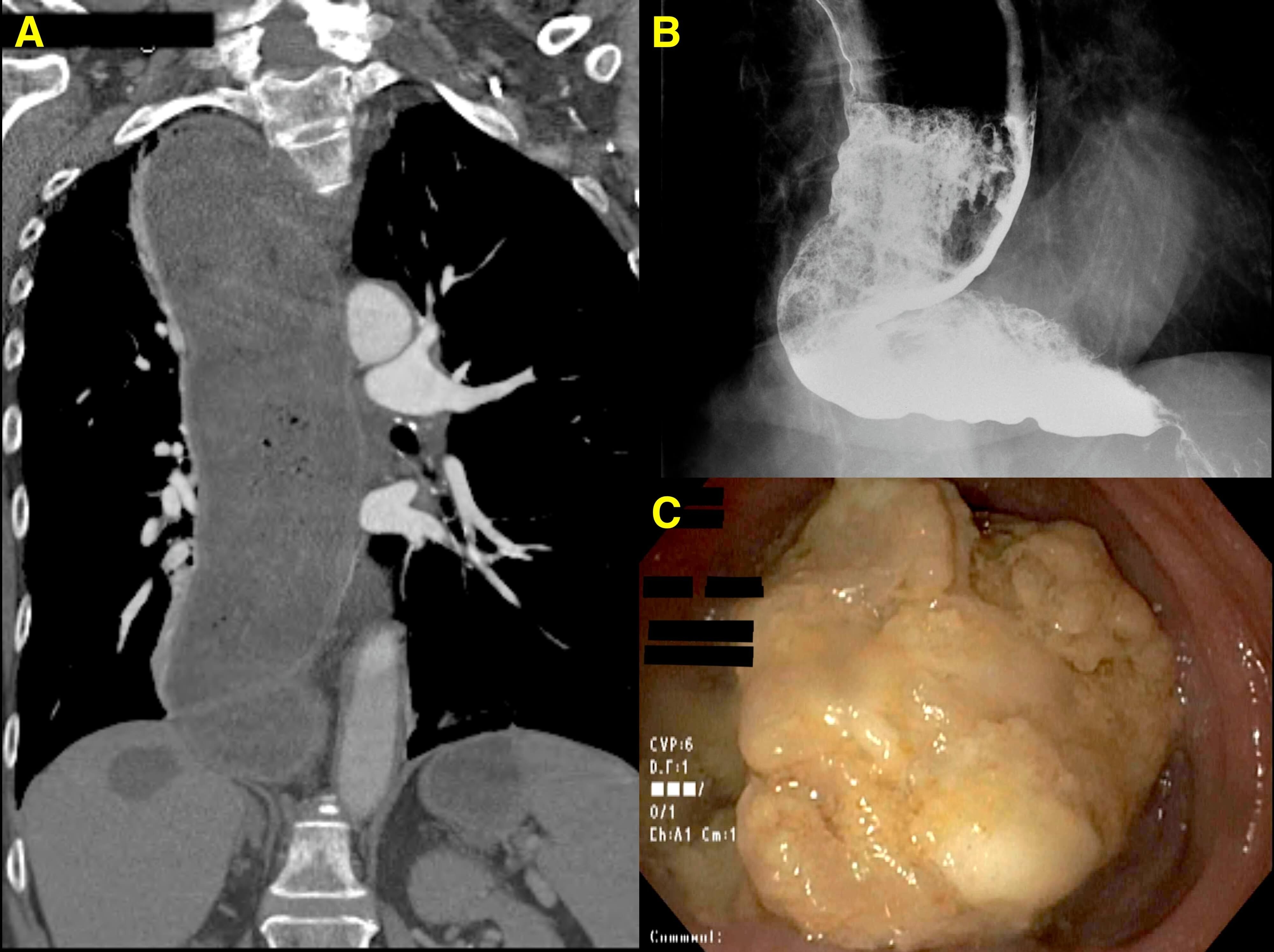Back
Poster Session C - Monday Afternoon
C0248 - A Case of Type II Achalasia Presenting With Markedly Elevated Troponins
Monday, October 24, 2022
3:00 PM – 5:00 PM ET
Location: Crown Ballroom

Talia F. Malik, MD
Chicago Medical School at Rosalind Franklin University of Medicine and Science
North Chicago, IL
Presenting Author(s)
Talia F. Malik, MD1, Daniel Khan, MD1, Pallavi Shah, MD2
1Chicago Medical School at Rosalind Franklin University of Medicine and Science, North Chicago, IL; 2Captain James A. Lovell Federal Health Care Center, North Chicago, IL
Introduction: Achalasia is an esophageal motility disorder that most commonly presents with dysphagia to solids and liquids, regurgitation, and heartburn over several years. In rare instances, it can mimic the presentation of acute coronary syndrome resulting in delayed diagnosis and unnecessary interventions. We report a case of achalasia that presented with markedly elevated troponins, prompting extensive cardiac workup.
Case Description/Methods: A 74-year-old female with a past history of hyperlipidemia presented with diffuse chest pain and shortness of breath for 1 day. Physical exam revealed tachypnea and diffuse chest tenderness. Chest X-ray showed a widened mediastinum. Laboratory studies revealed markedly elevated serial troponin values of 0.06 ng/ml, 0.09 ng/ml, and 1.14 ng/ml, respectively. This prompted an emergent cardiac evaluation with an electrocardiogram showing junctional ST depression, followed by a transthoracic echocardiogram that was unremarkable. CT angiogram of chest and abdomen revealed megaesophagus measuring 6 cm in diameter containing a large amount of debris extending to the cervical esophagus (A). Barium esophagram showed a dilated esophagus with pooling at the distal esophagus (B). Esophagogastroduodenoscopy revealed hypertonic lower esophageal sphincter (LES), severely dilated esophagus with large amounts of undigested food (C). Botulinum toxin was injected at the LES followed by balloon dilation. Esophageal manometry confirmed the diagnosis of Type II Achalasia. The patient underwent an uncomplicated Heller myotomy with fundoplication with gradual improvement in symptoms.
Discussion: Cardiac troponins (cTn) are sensitive biomarkers of myocardial ischemia (MI) and markedly elevated levels suggest acute thrombotic MI. Infrequently cTn elevation may be observed in gastrointestinal disorders such as achalasia that result in myocardial injury without ischemia. The likely mechanism is postulated to be significant myocardial compression secondary to the enlarged esophagus resulting in myocardial damage and troponin release. This case highlights the importance of forming a broad differential when evaluating patients presenting with elevated troponins and the importance of considering gastrointestinal causes to avoid misdiagnosis and delayed intervention once acute coronary syndrome has been ruled out.

Disclosures:
Talia F. Malik, MD1, Daniel Khan, MD1, Pallavi Shah, MD2. C0248 - A Case of Type II Achalasia Presenting With Markedly Elevated Troponins, ACG 2022 Annual Scientific Meeting Abstracts. Charlotte, NC: American College of Gastroenterology.
1Chicago Medical School at Rosalind Franklin University of Medicine and Science, North Chicago, IL; 2Captain James A. Lovell Federal Health Care Center, North Chicago, IL
Introduction: Achalasia is an esophageal motility disorder that most commonly presents with dysphagia to solids and liquids, regurgitation, and heartburn over several years. In rare instances, it can mimic the presentation of acute coronary syndrome resulting in delayed diagnosis and unnecessary interventions. We report a case of achalasia that presented with markedly elevated troponins, prompting extensive cardiac workup.
Case Description/Methods: A 74-year-old female with a past history of hyperlipidemia presented with diffuse chest pain and shortness of breath for 1 day. Physical exam revealed tachypnea and diffuse chest tenderness. Chest X-ray showed a widened mediastinum. Laboratory studies revealed markedly elevated serial troponin values of 0.06 ng/ml, 0.09 ng/ml, and 1.14 ng/ml, respectively. This prompted an emergent cardiac evaluation with an electrocardiogram showing junctional ST depression, followed by a transthoracic echocardiogram that was unremarkable. CT angiogram of chest and abdomen revealed megaesophagus measuring 6 cm in diameter containing a large amount of debris extending to the cervical esophagus (A). Barium esophagram showed a dilated esophagus with pooling at the distal esophagus (B). Esophagogastroduodenoscopy revealed hypertonic lower esophageal sphincter (LES), severely dilated esophagus with large amounts of undigested food (C). Botulinum toxin was injected at the LES followed by balloon dilation. Esophageal manometry confirmed the diagnosis of Type II Achalasia. The patient underwent an uncomplicated Heller myotomy with fundoplication with gradual improvement in symptoms.
Discussion: Cardiac troponins (cTn) are sensitive biomarkers of myocardial ischemia (MI) and markedly elevated levels suggest acute thrombotic MI. Infrequently cTn elevation may be observed in gastrointestinal disorders such as achalasia that result in myocardial injury without ischemia. The likely mechanism is postulated to be significant myocardial compression secondary to the enlarged esophagus resulting in myocardial damage and troponin release. This case highlights the importance of forming a broad differential when evaluating patients presenting with elevated troponins and the importance of considering gastrointestinal causes to avoid misdiagnosis and delayed intervention once acute coronary syndrome has been ruled out.

Figure: Figure A. Computed tomography angiogram of chest and abdomen showing megaesophagus in coronal view.
Figure B. Barium esophagram showing a dilated esophagus with pooling at the distal esophagus.
Figure C. Esophagogastroduodenoscopy showing severely dilated esophagus with large amounts of undigested food.
Figure B. Barium esophagram showing a dilated esophagus with pooling at the distal esophagus.
Figure C. Esophagogastroduodenoscopy showing severely dilated esophagus with large amounts of undigested food.
Disclosures:
Talia Malik indicated no relevant financial relationships.
Daniel Khan indicated no relevant financial relationships.
Pallavi Shah indicated no relevant financial relationships.
Talia F. Malik, MD1, Daniel Khan, MD1, Pallavi Shah, MD2. C0248 - A Case of Type II Achalasia Presenting With Markedly Elevated Troponins, ACG 2022 Annual Scientific Meeting Abstracts. Charlotte, NC: American College of Gastroenterology.
